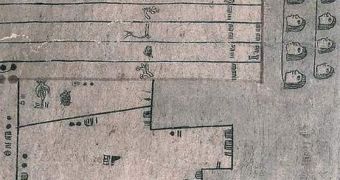Aztecs may be more famous for their bloody rituals, but they were one of the most advanced civilizations of America, with cities as larger as those of contemporaneous Europe, and formed perhaps the most powerful pre-Columbian empire, comparable only to the Inca. Such a powerful state was possible via a complex organization. A new research published in the journal "Science" shows the complicated tax codes employed by Aztecs.
They had developed their own arithmetic to determine the areas of taxable land. This Aztec arithmetic has been now decoded by this investigation. The researchers investigated two Aztec codices, dated 1540 to 1544, from the city-state of Tepetlaoztoc, decoding the complicated equations and fractions once used by the Aztec officials to calculate the size of land prone to tax payment.
The officials counted each household and its number of members, the surface of owned land and soil type (like stony, sandy, or "yellow earth"). "The ancient texts were extremely detailed and well organized, because landowners often had to pay tribute according to the value of their holdings. The Aztecs recorded only the total area of each parcel and the length of the four sides of its perimeter. Officials calculated the size of each parcel using a series of five algorithms-including one also employed by the ancient Sumerians," said co-author Maria del Carmen Jorge y Jorge at the National Autonomous University in Mexico City, Mexico.
The Aztec arithmetic comprised odd fractional symbols like hearts, hands and arrows.
"For example the heart. If you stretch out your left arm, that would be the measure from your heart to the tip of your finger. If you stretch both arms, the measure of the hand would be the distance between the tips of your two fingers. Your body you carry with you all the time and it's very easy to refer whatever you want to measure to your body. The primary land unit was likely the distance from the ground to the tip of a finger on an adult's upraised right arm-about 8.2 ft (2.5 m)," said Jorge y Jorge.

 14 DAY TRIAL //
14 DAY TRIAL //